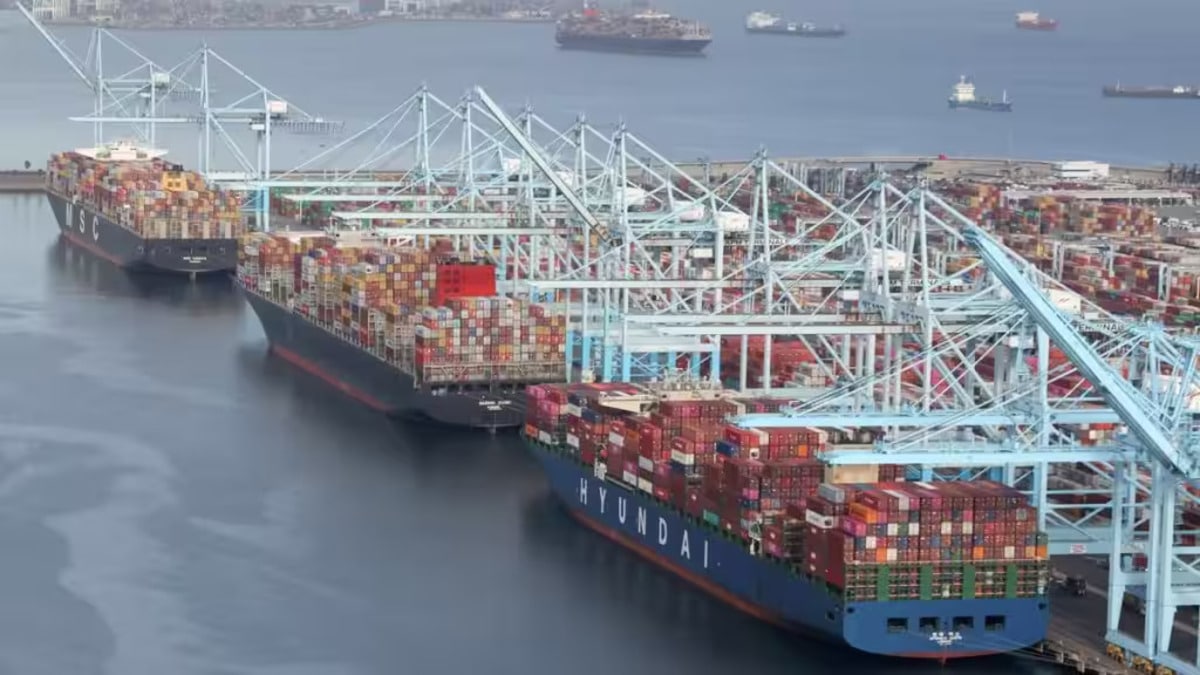 Image Credits : The Financial Express
Image Credits : The Financial Express
Under the leadership of Finance Minister Nirmala Sitharaman, India has unveiled plans to establish the India Middle East Europe Corridor (IMEC), a transformative multi-modal economic corridor aimed at revolutionizing commerce and fostering stronger cultural and diplomatic ties among member states.
The recently presented budget marked the government’s commitment to this initiative, emphasizing its potential to reshape trade dynamics and promote economic integration between Europe and India.
IMEC encompasses a comprehensive network of roadways, railways, and ship-rail transit routes spanning the Eastern Corridor, linking India with the Gulf, and the Northern Corridor, facilitating seamless connectivity from the Gulf to Europe.
In addition to physical infrastructure, IMEC will incorporate vital components such as an electricity cable, a hydrogen pipeline, and a high-speed data cable, all aimed at facilitating efficient trade and communication between the participating regions. The corridor will connect major Indian ports with key ports in the Middle East, facilitating smoother maritime trade flows.
Central to the IMEC initiative is the vision of enhancing trade opportunities and fostering overall industrial growth. By significantly reducing transit times and costs compared to existing routes, IMEC promises to unlock new avenues for trade connectivity with European nations, providing a substantial boost to economic activities along the corridor. This improved connectivity is expected to catalyze industrial growth, facilitating easier movement of goods and services and driving innovation and competitiveness in the regions connected to IMEC.
Moreover, the corridor is anticipated to generate substantial employment opportunities across various sectors. The surge in economic activities resulting from enhanced connectivity will create demand for skilled and unskilled labour, offering employment prospects for individuals across diverse industries and their associated sectors. This, in turn, is poised to contribute to socio-economic development and upliftment in the regions traversed by IMEC.
One of the key strategic imperatives driving IMEC is its potential to serve as a viable alternative to the Belt and Road Initiative (BRI). By offering infrastructure financing at standard international rates, IMEC seeks to alleviate concerns related to unsustainable debt burdens associated with Chinese-led initiatives. This strategic positioning not only mitigates the risk of debt traps but also reinforces the commitment to fostering sustainable development practices, including the reduction of greenhouse gas emissions through enhanced infrastructure.
The IMEC project, anchored within the broader framework of the Partnership for Global Infrastructure and Investment (PGII), showcases India’s proactive engagement in fostering global connectivity and development. With a focus on inclusive growth and sustainable development, IMEC holds the promise of expanding market opportunities for Indian manufacturers and technology startups, while simultaneously diversifying trade partnerships and reducing dependency on traditional markets.
As India charts its course towards achieving “Viksit” status by 2047, the IMEC emerges as an important milestone in its journey towards realizing its economic aspirations on the global stage.
